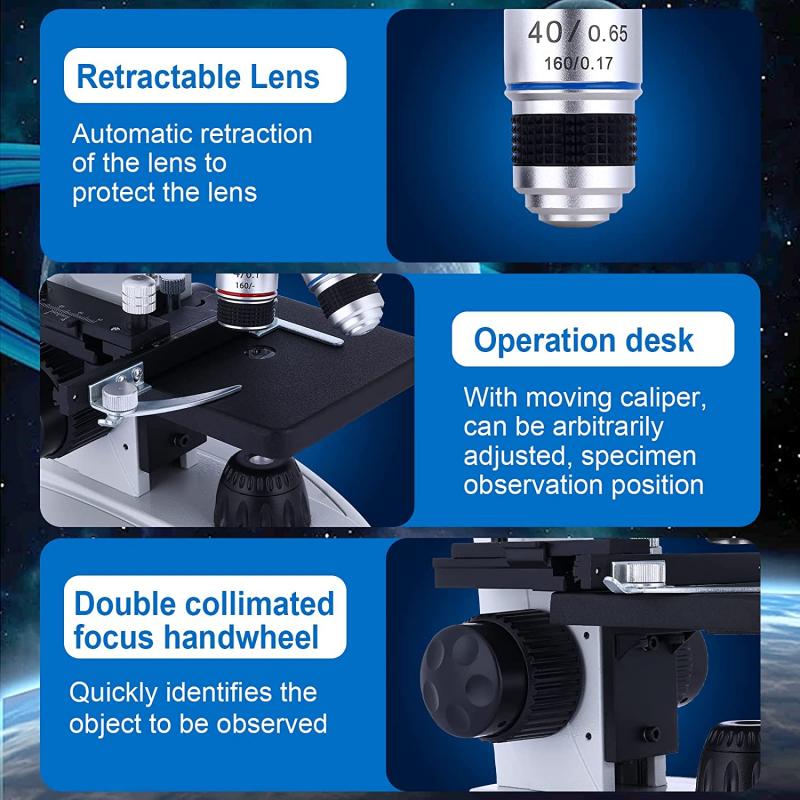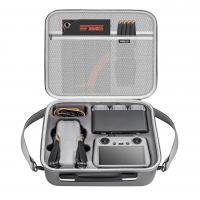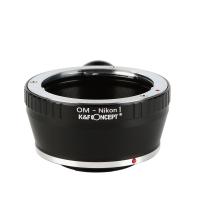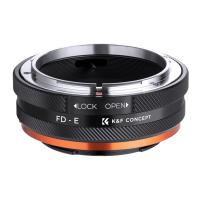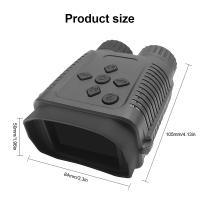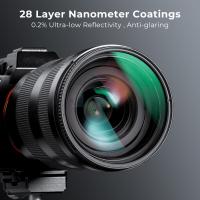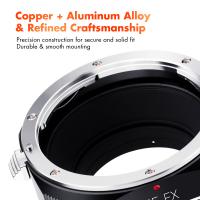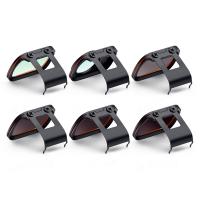How To Use Simple Microscope ?
To use a simple microscope, place the object you want to observe on a flat surface. Hold the microscope close to your eye and adjust the distance between the object and the lens until the object appears clear and focused. Move the microscope closer or farther away from the object to adjust the magnification. Use the focus wheel or knob to fine-tune the focus if needed. Move the microscope around to explore different areas of the object. Remember to keep the lens clean and handle the microscope with care to avoid damage.
1、 Adjusting the focus
To use a simple microscope, one of the most important steps is adjusting the focus. This ensures that the object being observed is clear and in focus, allowing for accurate observations and analysis. Here is a step-by-step guide on how to adjust the focus on a simple microscope:
1. Start by placing the object you want to observe on the stage of the microscope. Make sure it is centered and secured in place if necessary.
2. Look through the eyepiece and adjust the distance between your eye and the eyepiece until you have a clear view of the object.
3. Locate the focusing knob or wheel on the microscope. This is usually located on the side or underneath the stage.
4. Begin by turning the focusing knob or wheel in one direction. This will either move the stage up or down, depending on the design of the microscope.
5. Slowly turn the focusing knob or wheel until the object comes into focus. It may take a few adjustments to find the perfect focus point.
6. Once the object is in focus, you can make fine adjustments to the focus by turning the knob or wheel in small increments.
7. If you need to change the magnification level, you may need to readjust the focus slightly.
It is important to note that the process of adjusting the focus may vary slightly depending on the specific model of the microscope. Therefore, it is always recommended to refer to the manufacturer's instructions for the specific microscope you are using.
In recent years, advancements in microscope technology have led to the development of digital microscopes. These microscopes often have built-in autofocus capabilities, eliminating the need for manual focus adjustments. Additionally, some digital microscopes allow for remote focus adjustments through computer software, providing even greater convenience and precision.
Overall, adjusting the focus on a simple microscope is a crucial step in obtaining clear and accurate observations. By following the steps outlined above, you can ensure that your observations are sharp and detailed, allowing for a better understanding of the object being observed.
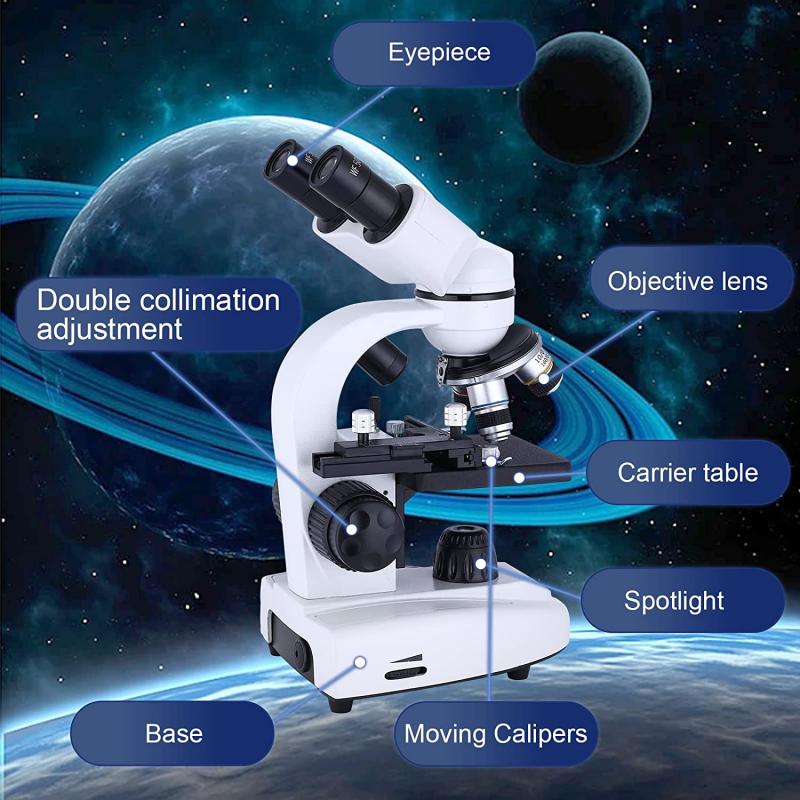
2、 Placing the specimen
To use a simple microscope, one of the first steps is to properly place the specimen. Placing the specimen correctly ensures that it is in focus and allows for clear observation. Here is a step-by-step guide on how to place the specimen in a simple microscope:
1. Prepare the microscope: Start by setting up the simple microscope on a stable surface. Ensure that the microscope is clean and free from any dust or debris that could obstruct the view.
2. Adjust the focus: Before placing the specimen, adjust the focus of the microscope. This can be done by moving the lens closer or further away from the specimen. The focus should be set to the lowest magnification initially.
3. Prepare the specimen: Depending on the type of specimen, it may need to be prepared before placing it on the microscope. For example, if observing a slide, ensure that it is clean and free from any smudges or dirt.
4. Place the specimen: Carefully place the specimen on the stage of the microscope. The stage is the flat platform where the specimen is positioned. Ensure that the specimen is centered and properly aligned.
5. Secure the specimen: If necessary, use clips or other mechanisms to secure the specimen in place. This prevents any movement or displacement during observation.
6. Adjust the focus again: Once the specimen is in place, adjust the focus of the microscope to bring the specimen into clear view. This can be done by slowly moving the lens closer or further away from the specimen until it is in focus.
7. Observe the specimen: Once the specimen is in focus, you can start observing it. Use the knobs or controls on the microscope to adjust the magnification and focus as needed.
It is important to note that the specific steps may vary depending on the type and model of the simple microscope being used. Always refer to the manufacturer's instructions for the specific microscope being used.
In recent years, advancements in technology have led to the development of digital microscopes. These microscopes often have built-in cameras and screens, allowing for easier observation and image capture. Some digital microscopes also have software that enables image analysis and measurement. These features can enhance the user experience and provide additional tools for scientific research and education.
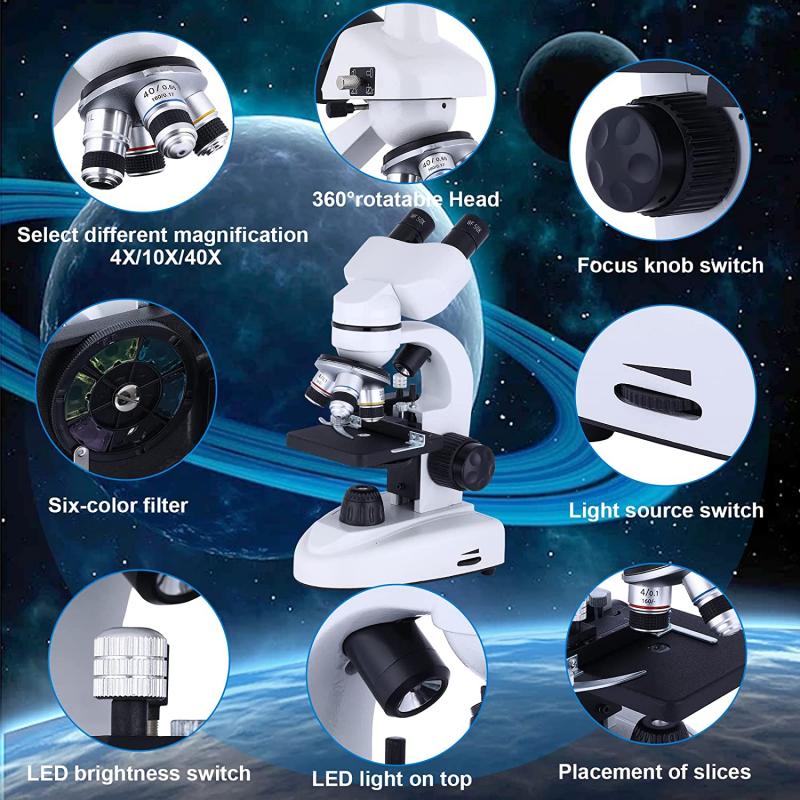
3、 Illuminating the specimen
To use a simple microscope, follow these steps:
1. Place the specimen on a clean, flat surface: Ensure that the specimen is clean and free from any debris or dust particles. This will provide a clear view under the microscope.
2. Adjust the light source: Position the microscope near a light source or use a built-in light if available. Adjust the intensity of the light to provide optimal illumination for the specimen. Proper lighting is crucial for a clear and detailed view.
3. Position the microscope: Place the microscope on a stable surface and adjust the height and angle of the microscope to ensure comfortable viewing. Make sure the microscope is securely positioned to avoid any accidental movement during observation.
4. Adjust the focus: Use the coarse focus knob to bring the specimen into rough focus. Then, use the fine focus knob to fine-tune the focus and obtain a clear image. Adjust the focus until the specimen appears sharp and well-defined.
5. Observe the specimen: Look through the eyepiece and slowly move the specimen slide around to explore different areas. Use the stage controls to move the slide horizontally or vertically to navigate the specimen.
6. Record observations: If necessary, use a pen and paper or a digital device to record any observations or measurements of the specimen. This will help in documenting and analyzing the findings.
In the latest point of view, advancements in technology have led to the development of digital microscopes. These microscopes have built-in cameras that allow for real-time viewing of the specimen on a computer screen. They also offer features like image capture and measurement tools, making it easier to document and analyze observations. Additionally, some digital microscopes have the capability to connect to other devices, enabling remote viewing and collaboration. These advancements have made microscopy more accessible and convenient, especially in fields such as research, education, and medical diagnostics.
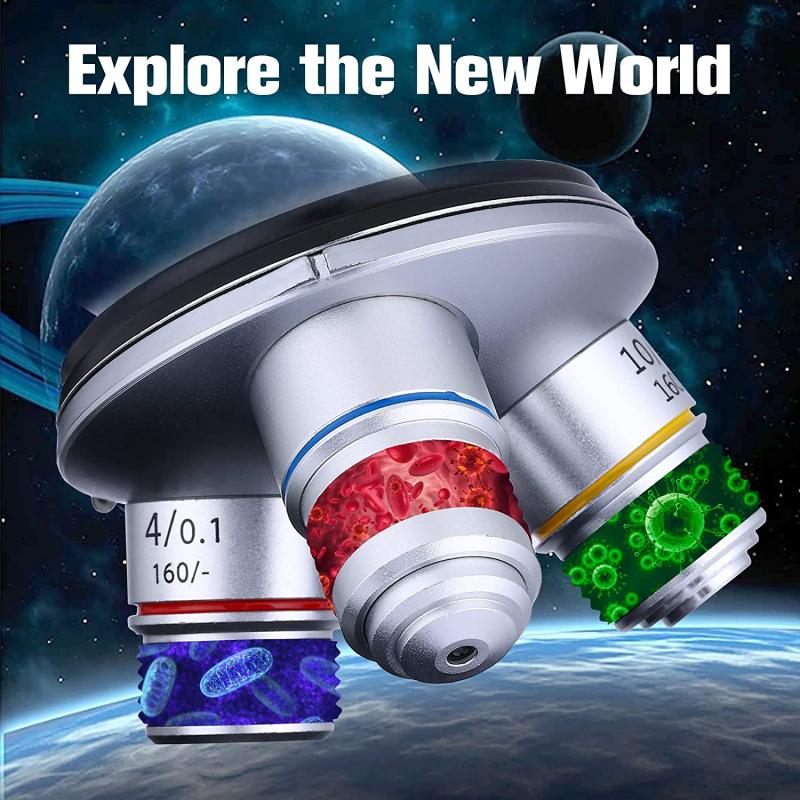
4、 Observing and magnifying the specimen
To use a simple microscope, follow these steps:
1. Set up the microscope: Place the microscope on a stable surface and ensure there is sufficient lighting in the area. Adjust the mirror or light source to illuminate the specimen.
2. Prepare the specimen: Place the specimen on a clean glass slide and cover it with a coverslip to protect it from damage and contamination.
3. Adjust the focus: Start with the lowest magnification objective lens. Use the coarse focus knob to bring the specimen into rough focus, then use the fine focus knob to sharpen the image. Adjust the diaphragm to control the amount of light passing through the specimen.
4. Observe the specimen: Look through the eyepiece and slowly move the slide around to explore different areas of the specimen. Use the stage controls to move the slide vertically and horizontally for a better view.
5. Magnify the specimen: If you want to increase the magnification, switch to a higher power objective lens. Repeat the focusing process to bring the specimen into clear view. Be cautious as higher magnification may require more precise adjustments.
The latest point of view on using a simple microscope emphasizes the importance of proper handling and maintenance. It is crucial to clean the lenses and slides after each use to prevent debris and smudges from affecting the image quality. Additionally, it is recommended to store the microscope in a dust-free environment and cover it when not in use to protect it from damage. Regular calibration and alignment checks are also advised to ensure accurate magnification and observation. Finally, it is worth noting that advancements in technology have led to the development of more sophisticated microscopes, such as digital microscopes, which offer additional features like image capture and analysis.
